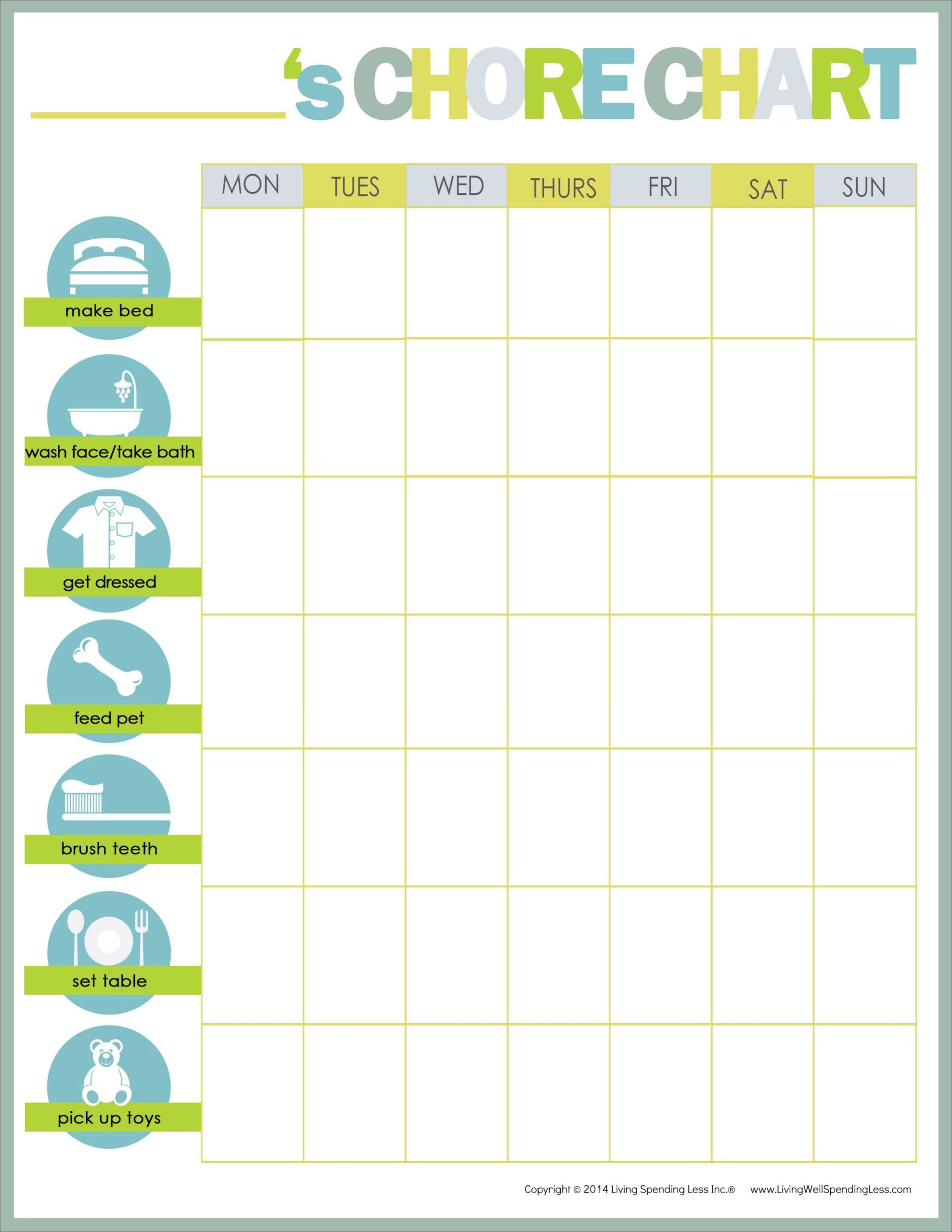Keeping up with household chores can be a daunting task, especially if you have a busy schedule. However, with a well-planned chore schedule, you can effectively manage your time and ensure that all tasks are completed promptly.
In this guide, we will walk you through the process of creating a chore schedule that works for you and your family. From determining what needs to be done to assigning tasks and setting a schedule, we have you covered. Say goodbye to the chaos and hello to an organized and efficient household!
What is a Chore Schedule and Why is it Important?
A chore schedule is a systematic plan that outlines the household tasks that need to be completed regularly and assigns them to specific individuals or time slots. It helps to ensure that all chores are evenly distributed and nothing falls through the cracks. Having a chore schedule in place also promotes accountability, teaches responsibility, and prevents the buildup of clutter and mess in your home.
By implementing a chore schedule, you can establish a routine and create a sense of order within your household. It allows everyone to have a clear understanding of their responsibilities and helps to avoid conflicts or misunderstandings regarding who should be doing what. Additionally, a chore schedule can free up your time and reduce stress, as you won’t have to constantly worry about keeping up with all the household tasks.
How to Create a Chore Schedule
Now that you understand the importance of a chore schedule, let’s dive into the step-by-step process of creating one:
1. Determine the Tasks
Start by making a comprehensive list of all the household tasks that need to be done regularly. This can include cleaning, laundry, cooking, grocery shopping, yard work, and any other chores specific to your household. Break down larger tasks into smaller, more manageable ones. For example, instead of listing “clean the entire house,” you can list individual tasks like “dust the furniture,” “vacuum the floors,” and “clean the bathrooms.”
2. Assign Tasks
Next, determine who will be responsible for each task. Consider the abilities and interests of each family member and assign tasks accordingly. It’s important to distribute the workload fairly and ensure that everyone has a role to play. This not only teaches responsibility and teamwork but also prevents one person from feeling overwhelmed with all the chores.
3. Set a Schedule
Once you have assigned tasks, it’s time to set a schedule. Determine how often each task needs to be done and create a weekly or monthly schedule. You can assign specific days or time slots for each task or rotate them regularly. Be realistic with your schedule and take into account everyone’s availability and other commitments. Flexibility is key here, as unexpected events or changes in routine may occur.
4. Communicate and Review
It’s important to communicate the chore schedule with everyone in the household. Hold a family meeting to discuss the schedule and make sure everyone understands their responsibilities. Encourage open communication and be willing to make adjustments if necessary. Regularly review the chore schedule to ensure that it is still working effectively and make revisions as needed.
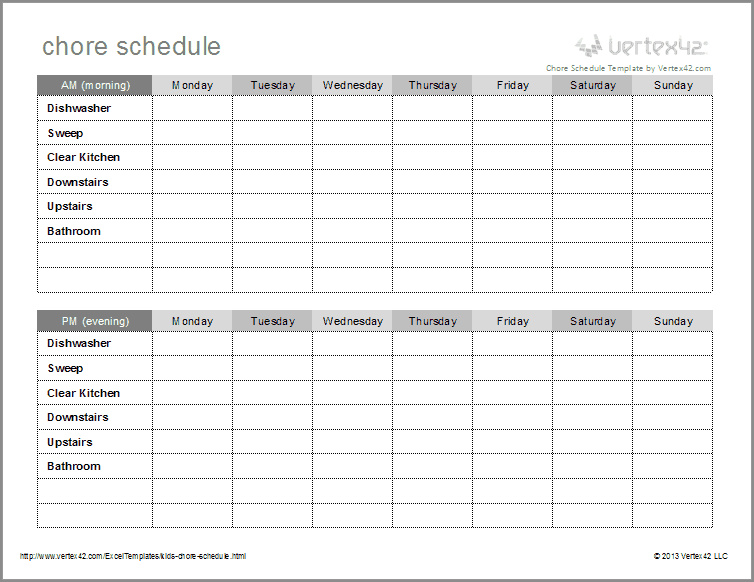
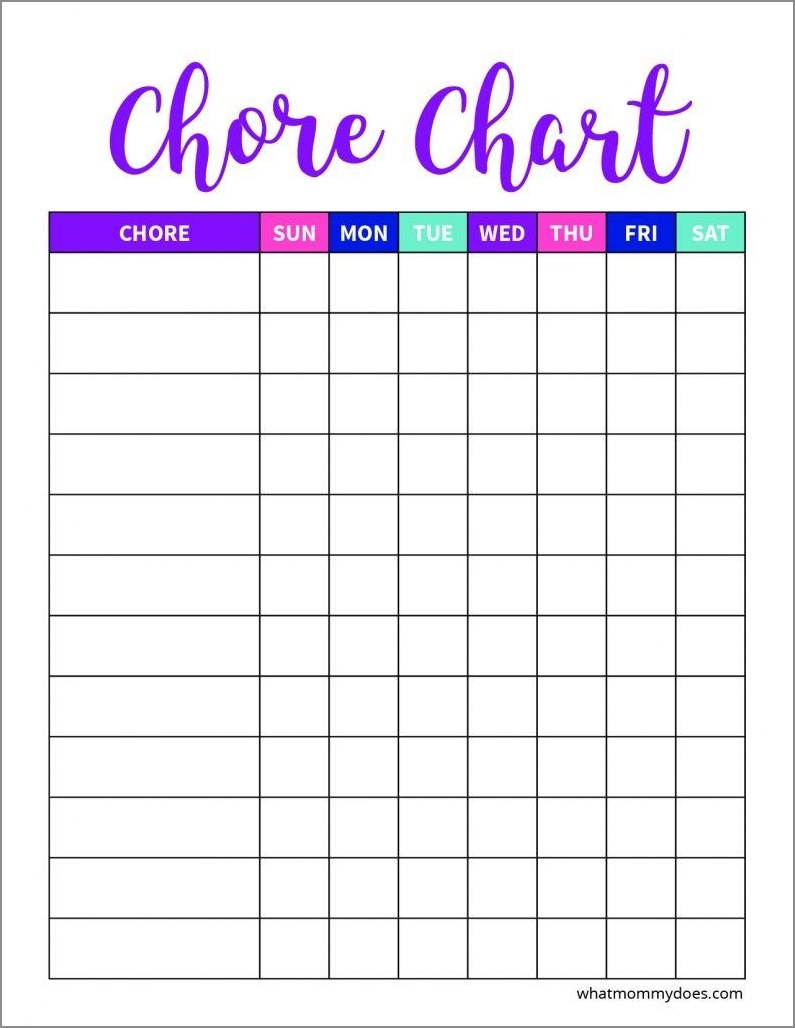
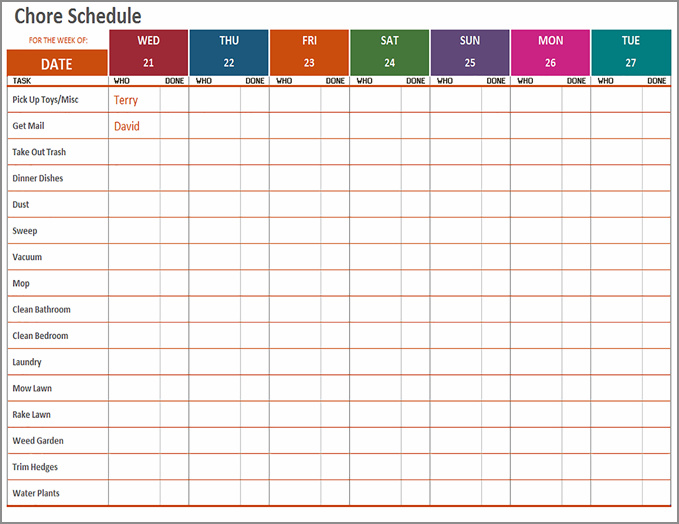
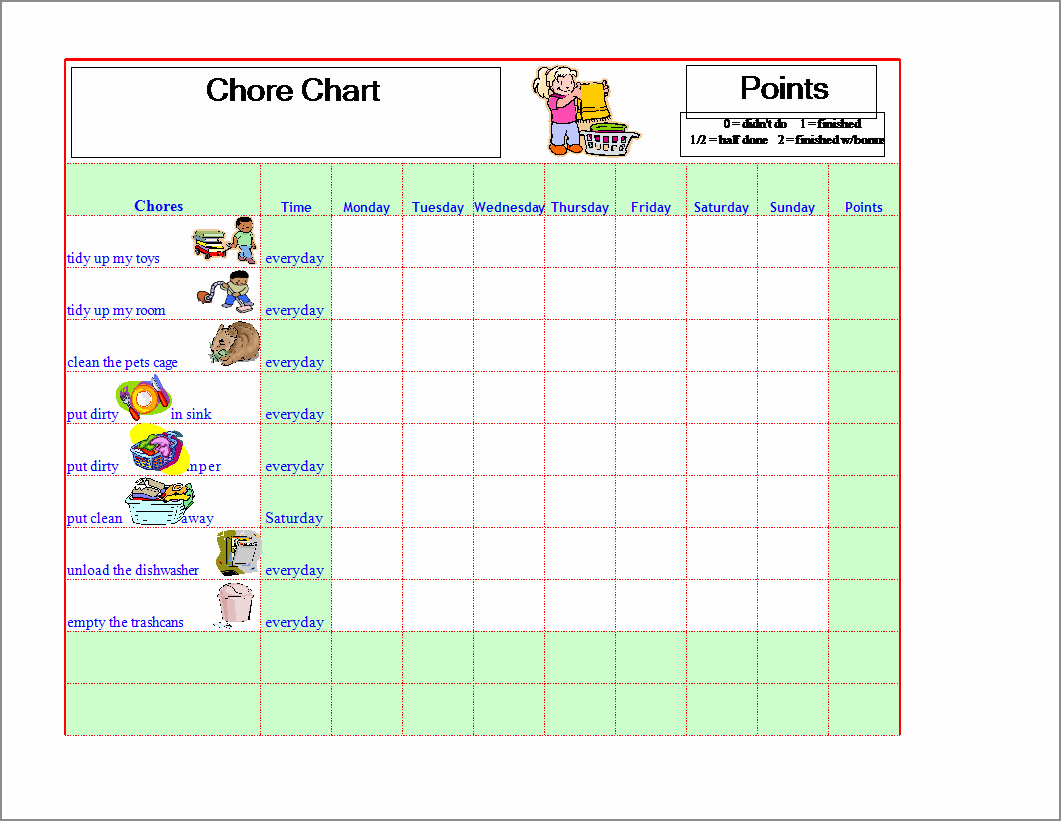
Tips for Maintaining a Chore Schedule
Now that you have created a chore schedule, here are some tips to help you maintain it:
- Stick to the schedule: Consistency is key. Try to stick to the chore schedule as much as possible and encourage everyone to do the same. This will help to establish a routine and make it easier to stay on top of tasks.
- Be flexible: Life happens, and sometimes unexpected events or changes in routine may occur. Be flexible and willing to make adjustments to the schedule when needed. It’s important to adapt and find a balance that works for everyone.
- Offer incentives: To motivate family members to complete their assigned tasks, consider offering incentives or rewards. This can be as simple as praise and recognition or something more tangible like a small treat or privilege.
- Lead by example: Show your family members the importance of the chore schedule by leading by example. Take responsibility for your tasks and demonstrate a positive attitude towards completing them.
- Make it fun: Chores don’t have to be tedious. Find ways to make them more enjoyable by playing music, setting timers, or turning them into a friendly competition. Get creative and make chores a time for bonding and laughter.
- Review and adjust: Regularly review the chore schedule and make adjustments as needed. As your family’s needs and routines change, you may need to revise the schedule to ensure it remains effective.
Conclusion
A chore schedule is an essential tool for maintaining an organized and efficient household. By creating a chore schedule, you can distribute the workload, establish a routine, and promote responsibility within your family. Remember to communicate the schedule, be flexible, and make it fun. With a well-planned chore schedule in place, you can say goodbye to chaos and hello to a clean and harmonious home!
Chore Schedule Template Word – Download
